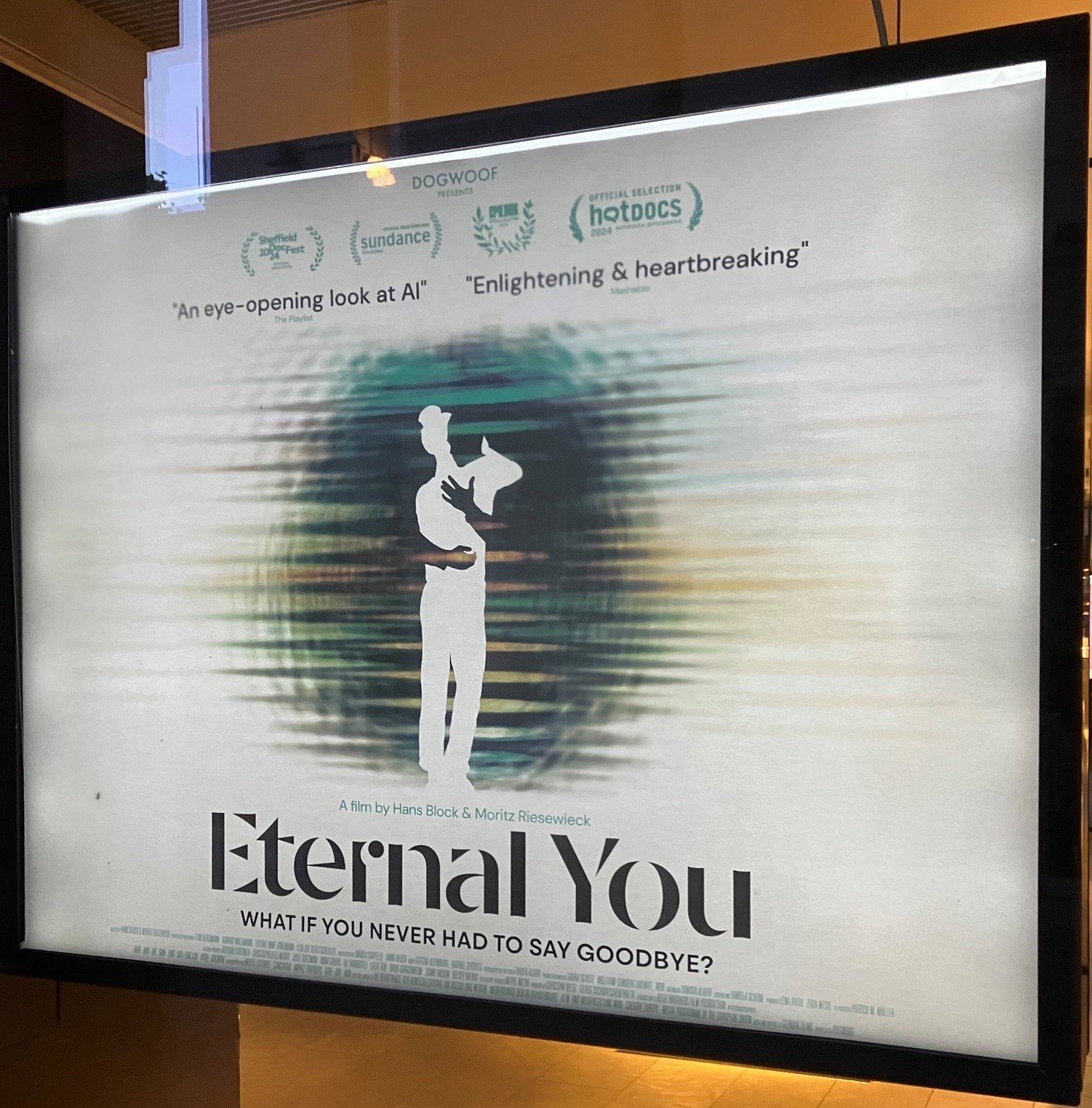Review - ‘Eternal You’: a documentary about the Digital Afterlife Industry
In her second blog for Part of Life, Khadiza Laskor, a third-year PhD Student at the University of Bristol’s Cyber Security Centre for Doctoral Training Programme, reviews ‘Eternal You’: a documentary about the Digital Afterlife Industry.
Khadiza’s PhD – 'Governance in the Digital Afterlife’ – is an inductive case study exploring the possibility of anticipatory governance on ‘grief tech’.
‘Eternal You’
June 2024 saw the UK release of Eternal You, a documentary nominated in this year’s Sundance Film Festival.
It features companies serving the Digital Afterlife Industry which has grown with the emergence of Generative Artificial Intelligence (AI): texts, audio and images generated by algorithms.
The companies showcased were Project December, HereAfter AI, YOV, and Soul Machines. It also featured Meeting You, the Korean documentary series that first showed the prospects of reuniting with the deceased in virtual reality.
Fig. 1: Photo taken at Curzon Bloomsbury in London, 28 June 2024
The innovators’ reasons
Eternal You intersects viewpoints between five innovators, four users, three academics and footage from the US Senate Judiciary Hearing on regulating AI.
The founders of Project December, YOV and Soul Machines are filmed explaining their motivations (which range from not accepting death, building a new era of grief and death being unnatural), fine-tuning their products and responding to criticism.
Fig. 2: Image from 'Meeting You', per GadgetMatch's article:
www.gadgetmatch.com/mother-daughter-reunion-virtual-reality/
Project December initially featured in the news in 2021 and provides a text-based chatbot which is considered as a conscious thinking entity or lost ghost coming out of the shadow. The segment on HereAfter AI focused on voice synthesising, while YOV aims to create a virtual essence of a person. Soul Machines focuses on a digital nervous system, brain and consciousness (the founder’s baby is his template).
"The founders are dismissive of critics, blaming the taboo of talking about grief in public, users having a flawed belief system, and not being responsible for them.
One specific example shows their bewilderment when a chatbot (which they believe has a mind of its own) responds aggressively and offensively.
Fig. 3: Baby X being developed by the founder of Soul Machines
It is here when footage of the US Senate hearing is shown regarding ethical concerns over AI that forms the crux of the documentary.
User experiences
The reasons for signing up to the services consisted of:
Wanting the opportunity to have the last conversation they didn’t have
Avatars providing a different dimension than photographs or videos
Giving the chance for younger relatives to learn from their grandfather
Seeing it as a gift in giving another chance to live
Interestingly, users tested their purchases with information that their loved one should know.
It was notable that two of the users were black women, which contrasted with the white male innovators. Also notable were the invisible wives of the innovators who had expressed caution. However, there was contrast between the two users over the intimacy of their decision; one expressed that no one needed to know whereas the other did a family gathering.
Some relatives were concerned at not being able to tell the difference (inferring a risk of fraud) but were also amazed at how technology captures a self and makes it immortal. However, older relatives saw no need for it as they considered memories to be enough. Religion, mainly Christianity, was briefly highlighted in surmising that technology shouldn’t mimic a person.
One user eventually confides in her sibling after her bot claims that it is in hell. Her brother is concerned about the vulnerable being manipulated by ‘death capitalism’.
Fig. 4: A Project December User featured in the film
Expert contributions
It was a relief to see Sherry Turkle and Carl Öhman; both of whom have influenced my own research. Turkle has studied human relationships with technology, while Öhman looked at the moral implications of this industry, as it turns the dead into commodities. The third academic was Sara M. Watson who is a technology critic.
Turkle views AI like religion, as it offers transcendence, but adds there are lessons that can be learned from how social media has shaped human relationships.
She seemed more sympathetic to the innovation as she articulates that humans have always used memories to carry a person forwards, but that devices can make one believe that someone is present when they aren’t. Öhman and Watson are less sympathetic, due to technology companies making excuses for not taking responsibility; blaming algorithms when harmful behaviours are exhibited.
Relationships & Memories
As a piece of film, I liked the way drones were used; one piece of footage showed headstones resembling binary code or DNA, and another acted like a spirit hovering overhead.
The most enlightening part was hearing the Korean mother from Meeting You: the fourth user. Her rationale was guilt, as the last conversation she had with her daughter was scolding her.
I empathised with her immensely, and it taught me that people shouldn’t be judged on how they manage or resolve their grief. Instead, judgement should be passed on these companies, if the attitudes displayed in the film are anything to go by.
The most ironic moment came from the YOV founder whose wife gave him an ultimatum. Having explained the reason behind YOV (that human relationships are the most important thing and he saw no reason why it shouldn’t continue with the deceased), he chose the company over her.
While I agree with his sentiment on human relationships, Turkle’s parting comment resonates more; that innovation should be creative but kept in check.




